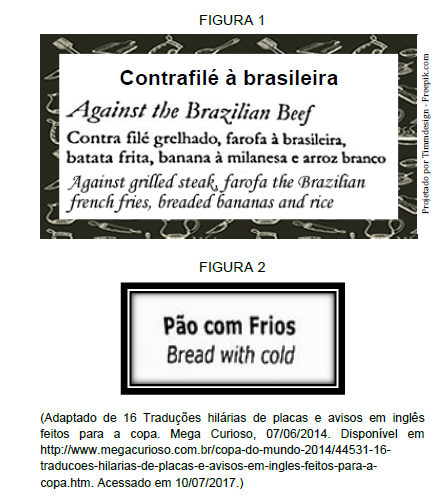Questões de Vestibular UNICAMP 2017 para Vestibular
Foram encontradas 3 questões

Entre as inadequações no uso do inglês observadas nas
figuras 1 e 2, podemos citar:

Os panfletos acima foram distribuídos na entrada de uma
assembleia de estudantes universitários, reunidos para
discutir um pedido de reforma nos banheiros do campus.
Assinale a opção correta.
The modern F=ma form of Newton's second law occurs nowhere in any edition of the Principia even though he had seen his second law formulated in this way in print during the interval between the second and third editions in Jacob Hermann's Phoronomia of 1716. Instead, it has the following formulation in all three editions: A change in (1) ________ is proportional to the motive (2) ________ impressed and takes place along the (3) _________ line in which that force is (4)________. In the body of the Principia this law is applied both to (5) _______ cases, in which an instantaneous impulse such as from impact is effecting the change in motion, and to cases of (6) _______ action, such as the change in motion in the continuous deceleration of a body moving in a resisting medium. Newton thus appears to have intended his second law to be neutral between discrete forces (that is, what we now call impulses) and Hermann's Phoronomia of 1716. Instead, it has the following formulation in all three editions: A change in (1) ________ is proportional to the motive (2) ________ impressed and takes place along the (3) _________ line in which that force is (4)________. In the body of the Principia this law is applied both to (5) _______ cases, in which an instantaneous impulse such as from impact is effecting the change in motion, and to cases of (6) _______ action, such as the change in motion in the continuous deceleration of a body moving in a resisting medium. Newton thus appears to have intended his second law to be neutral between discrete forces (that is, what we now call impulses) and continuous forces.
(Adaptado de George Smith, "Newton's Philosophiae Naturalis Principia Mathematica", em Edward N. Zalta (ed.), The Stanford Encyclopedia of Philosophy (Winter 2008 Edition). Disponível em https://plato.stanford.edu/archives/win2008/entries/newton-principia/. Acessado em 24/10/2017.)
Assinale a alternativa que apresenta a sequência
adequada de palavras que preenchem as lacunas do texto
acima, para que os conceitos utilizados estejam corretos.